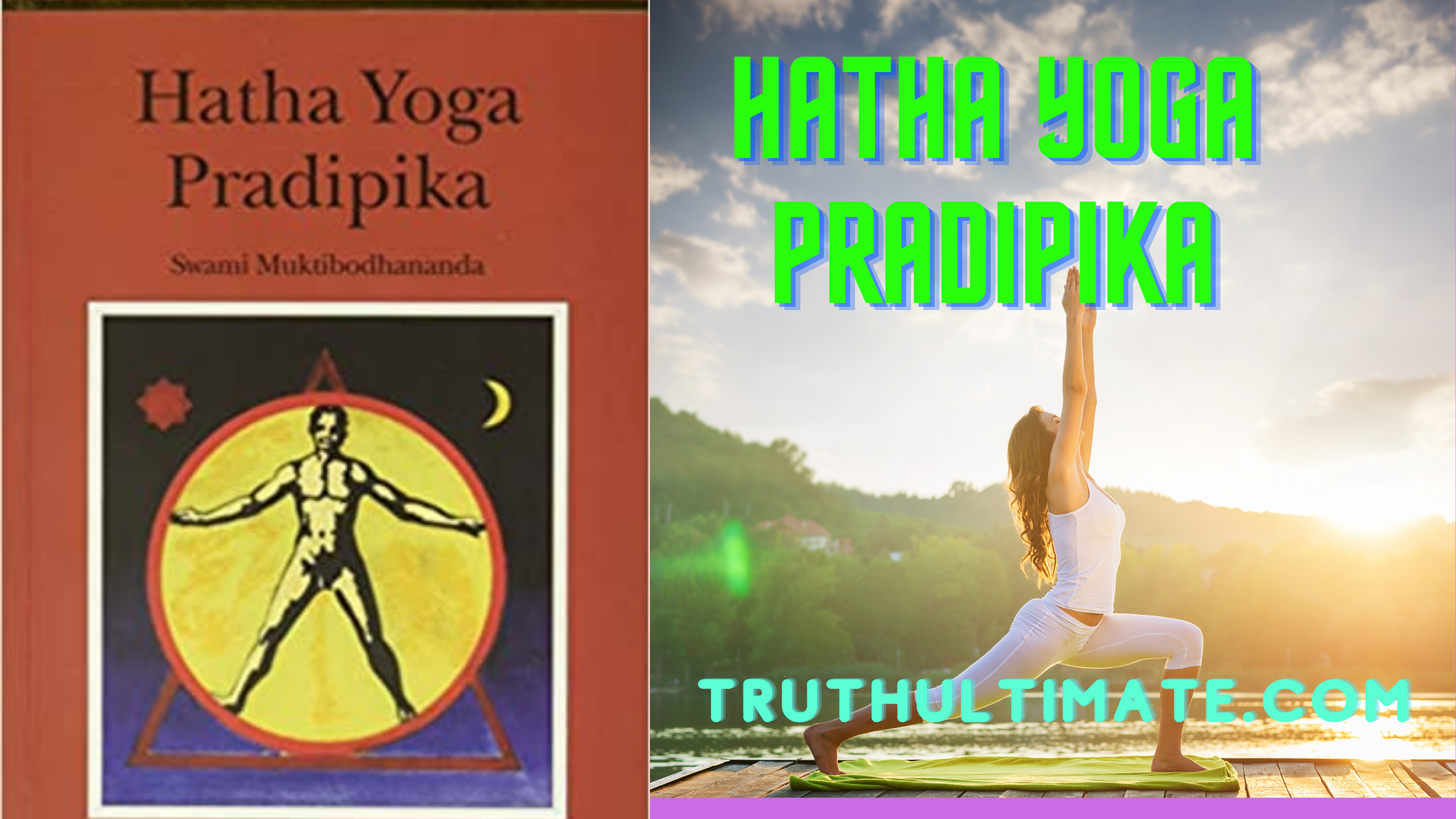Hatha yoga is widely practiced, and Hatha Yoga Pradipika is one of the ancient texts regarding this.
Yoga is gaining popularity worldwide, and some parts of yoga have gained much popularity in the west.
And, they consider only part like “hatha yoga” as the whole yoga, but that’s not correct. As there is much more to it.
Similarly, as with all ancient texts and scriptures, the composing is short and regularly supernatural, strange, and somewhat mysterious.
It is important to understand the real meaning behind those scriptures and what information they comprehend.
A large number of these lessons and practices are presently exclusive and odd; however, they are as yet viewed as incredible strategies that should be investigated if one wishes to track down edification through hatha yoga.
What are Hatha Yoga Pradipika Asanas?
Hatha yoga asanas are the particular body positions that plan to open the body’s energy channels and psychic focuses.
Past stretching and other actual impacts, hatha yoga asanas have mental means as well. It makes Prana moves openly and freely.
Following Prana with no impediment is the main key to a disease-free body.
Almost all the ancient texts state that there are 84 asanas of the Hatha Yoga, but many of them just describe the basic ones.
Some of them are as follows:
- Swastikasana (Auspicious Pose)
- Gomukhasana (Cow face pose)
- Veerasana (Hero pose)
- Kurmasana (Tortoise pose)
- Kukkutasana (Cockerel Pose)
- Uttana Kurmasana (Stretching Tortoise Pose)
- Dhanurasana (Bow Pose)
- Matsyendrasana (Spinal Twist Pose)
- Paschimottanasana (Back Stretching Pose)
- Mayurasana (Peacock Pose)
- Shavasana (Corpse Pose)
- Siddhasana (Accomplished Pose)
- Padmasana (Lotus Pose)
- Simhasana (Lion Pose)
- Bhadrasana (Gracious Pose)
Hatha Yoga Pradipika Asanas Sanskrit:
Hatha Yoga Asanas are described in the first chapter of the Hatha Yoga Pradipika.
All the Sanskrit books of Hatha Yoga states that there are 84 Asanas, but the description is found of only some.
All the asanas are equally beneficial, and they all have great benefits for both physical and psychological means.
Hatha yoga pradipika book:
Hatha Yoga Pradipika book is a 15th-century book comprising four chapters describing everything about Hatha Yoga.
All the asanas and what you need to prepare for the hatha yoga start from setting up the yoga environment.
Basically, it’s the compilation of all the previous hatha yoga texts.
The majority of this text subtleties the strategies of the primary acts of Hatha Yoga: Asana, Pranayama, Shatkarma, mudra, and Bandha.
After some essential fundamental necessities in the first chapter, Swatamarama clarifies the main phase of Hatha Yoga which is Asana, the actual poses that we are generally recognizable in the west.
Asana makes the solidness of the body and psyche disease-free and helps to achieve the adaptability and flexibility of the body.
It is here where we initially figure out how to control and train the body.
Swatamarama lets us know that once an act of Asana has been set up then pranayama can be started.
The objective of these breathing activities is to control the Prana and the hidden energies of the body, which thus can be utilized to control the brain.
In the subsequent part, Swatamarama lets us know that assuming there is an over-the-top bodily fluid in the body, this should be taken out utilizing the six cleaning procedures of shatkarma.
These filtering strategies, just as the pranayama, help clean the body’s energy channels and permit the Prana to move all the more proficiently through these nadis.
The third section investigates the inconspicuous energy frameworks and the act of mudras and bandhas.
Using mudra and bandha further initiates the energy of the body, concentrates it, and channels it into the principal energy channel, the Sushumna, that runs from the foundation of the spine to the highest point of the head and meets each of the seven chakras.
Mudras are mind-boggling developments of the entire body in a mix of Asana, pranayama, bandha, and perception.
Bandhas are the commitment of explicit gatherings of muscles at the foundation of the pelvis, the midsection, and the throat to “lock” the prana energy of the body inside the middle.
Both of these strategies are trying to dominate and ought to just be endeavored after one is able and talented in both Asana and pranayama.
Part Four gives extra strategies to the achievement of illumination or Samadhi.
Swatamarama noticed that fostering a sound body and a sound psyche is vital for the fulfillment of Samadhi.
At the point when this last stage is reached, a yogi will encounter the unstruck sound, known as Pranava, the vibration of the whole universe.
Hatha Yoga Pradipika Written by:
Hatha Yoga Pradipika was formed and written by Svātmārāma in the fifteenth century as an arrangement of the prior haṭha yoga texts.
Svātmārāma consolidates more seasoned Sanskrit ideas into his combination.
He presents his framework as a preliminary stage for actual purging before higher meditation or Raja Yoga.
How many chapters in hath yoga pradipika?
There are four chapters in the Hatha Yoga Pradipika.
- Chapter 1: Asanas
- Chapter 2: Shatkarma and Pranayama
- Chapter 3: Mudra and Bandha
- Chapter 4: Samadhi
Hatha Yoga Pradipika Chapter 1:
Chapter 1 talks about the preparation of yoga and the asanas along with benefits.
It summarizes these things.
- Gorging, exertion, loquacity, holding fast to rules, being in the company of average citizens, and insecurity of psyche are the six causes that obliterate yoga.
- Excitement, enthusiasm, perseverance, discrimination, unwavering confidence and faith, boldness, courage, and staying away from the company of everyday citizens are the six causes that you should acquire to be successful in yoga.
- Paschimottanasana is awesome among asanas. By this Asana, the pranic flows ascend through the focal energy channel. The digestive fire builds, the mid-region and the stomach turns out to be flat, and those who practice it are also liberated from sicknesses.
Hatha Yoga Pradipika Chapter 4:
Chapter 4 is all about the Samadhi and talks about:
- At the point when the psyche stops fickle and is joined by fixing it in nads, it becomes fixed like a wingless bird.
- One who wants to nail yoga should investigate the nads with a mindful brain and leave all musings and thoughts.
- The yogi in Samadhi is neither eaten by time, nor limited by Karma, nor overwhelmed by anybody.
- The yogi in Samadhi knows neither smell, nor taste, nor structure, nor contact, nor sound, nor herself, nor others.
How many asanas are in hath yoga pradipika?
There are 84 asanas as per the Hatha Yoga Pradipika but the Hatha Yoga scriptures describe only 15 asanas and sometimes 34-36 asanas.
What are the four states in yoga according to hath yoga pradipika?
There are four states according to the Hatha Yoga Pradipika.
- Asanas
- Shatkarma and Pranayama
- Mudra and Bandha
- Samadhi
How many mudras are in hath yoga pradipika?
The Hatha Yog Pradipika describes 10 Mudras.
- Maha Mudra (The Great Attitude)
- Maha Bandha (Great Lock)
- Maha Vedha Mudra (Great Piercing Attitude)
- Uddiyana Bandha (Abdominal Retraction Lock)
- Moola Bandha(perineum/cervix retraction lock)
- Jalandhara Bandha (throat lock)
- Vipareeta Karani Mudra (reversing attitude)
- Sahajoli Mudra– Attitude of Spontaneous Arousing
- Amaroli Mudra (Attitude Arousing Immortality)
- Shakti Chalana Mudra (attitude of moving the energy)
Hath yoga pradipika summary:
The Hatha Yoga Pradīpikā records 35 prior Haṭha Yoga masters (Siddhas), including Ādi Nātha, Matsyendranāth, and Gorakṣanāth.
The work comprises of 389 shlokas (sections) in four parts that portray subjects including ṣaṭkarma, āsana, prāṇāyāma, chakra, kuṇḍalinī, bandha, śakti, nāḍī, and mudra.
- Chapter 1:
Arrangements with setting the appropriate climate for yoga, the moral obligations of a yogi, and the asanas.
- Chapter 2:
Arrangements with pranayama and the satkarmas.
- Chapter 3:
It talks about the mudras and their advantages.
- Chapter 4:
Arrangements with contemplation, meditation, and Samadhi as an excursion of individual profound development.
It runs in the line of Hindu yoga (rather than the Buddhist and Jain customs) and is committed to The First Lord (Ādi Nātha), one of the names of Lord Śiva.
He is portrayed in a few texts from the Dattātreyayogaśāstra onwards as having granted the mystery of haṭha yoga to his heavenly partner Pārvatī.





